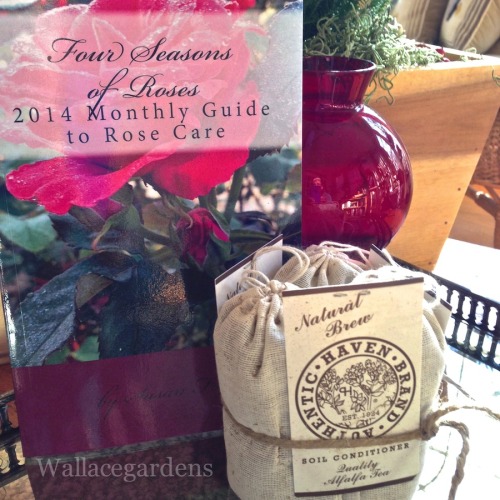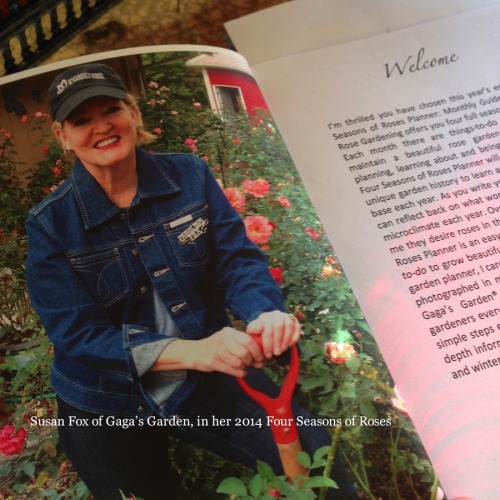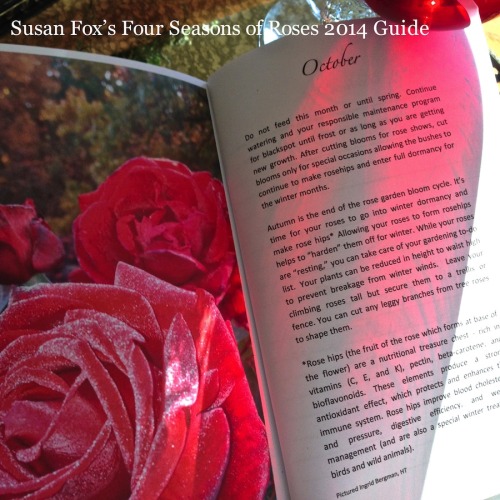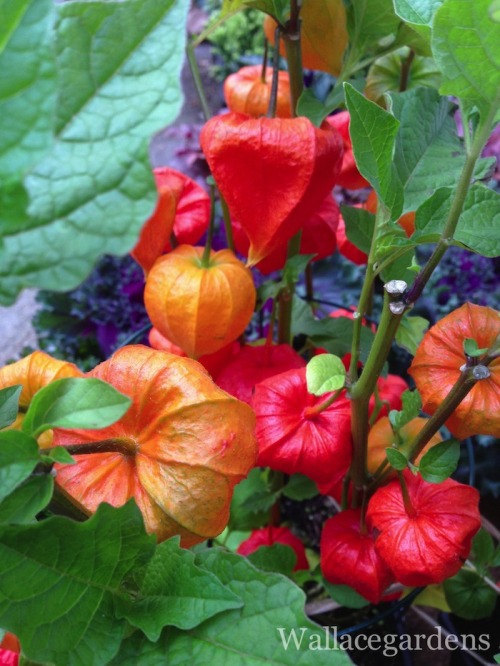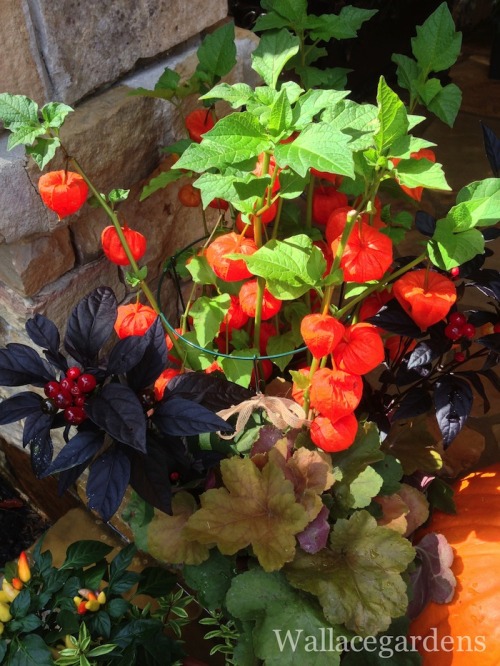#moopoocrew
How about a garden giveaway? What a lovely way to start the new year! The dead of winter is a perfect time to plan a garden, so here’s a little gift to get you started.
I’m giving away a copy of Susan Fox’s brand new guide: Four Seasons of Roses 2014 Monthly Guide to Rose Care … along with the added bonus of a 3-pack of organic Alfalfa Tea from Authentic Haven Brand Natural Brew, to help grow your roses more beautifully than ever. To enter the giveaway, you must have a shipping address in the United States or Canada, and you must “like” or comment on this photo on Pinterest.
Susan is one of the most gracious and generous gardeners I know, and is always willing to share her secrets to growing roses with the rest of us. “Roses are easy, people can be difficult,” and Susan proves that point with her tips in the new 2014 guide, filled with colorful photographs of roses she took in her rose garden. You can read about her journey to write the guide on her blog.
The American Rose Society awarded Susan with its Presidential Citation “for Promoting the Rose and Rose Education Via Social Media,” and her photo of the Julia Child Rose is included in the 2014 ARS Calendar for the month of July.
You can find Susan on twitter, @gagasgarden, or on her blog, Gaga’s Garden when she isn’t taking care of her roses.
Post link
Physalis alkekengi (Chinese Lantern)
This unusual plant is a member of the potato family, Solanaceae (which also includes tomatoes, peppers, and eggplants). “Physalis” is from the Greek “a bladder,” a reference to the inflated calyx (sepals of the flower). The flower pods, or lanterns, contain a berry where the seeds are located. Because it spreads by colony-forming rhizomes, it is considered invasive in many parts of the country. Here in Georgia (specifically Zone 7B) it is most commonly used as a fall annual for autumn planters because it combines beautifully with all the colors of fall. Use caution if setting Physalis out into the landscape in a planter, as its roots can easily escape and take hold in the yard.
To dry the lanterns for winter floral arrangements, simply cut the stems off at ground level when the lanterns reach their peak color and remove the leaves. Hang them right side up to dry in a dark, protected location with good air circulation.
Growing Physalis is similar to growing tomatoes, which may explain its sudden popularity in garden centers. Started from seed, the plants will grow in much the same way as tomatoes, with the fruit (lanterns) maturing mid to late summer, along with late-summer garden tomatoes.
This plant is best grown as an outdoor ornamental, because the immature fruits are considered poisonous to children and pets. For information about toxicity, refer to: Lampe, K. F., McCann, M. A. 1985. AMA Handbook of poisonous and injurious plants. American Medical Assoc. Chicago, Ill., USA. 432 pp.
To keep these plants in spectacular form through the Thanksgiving weekend, they are fed a diet of organic compost tea, from Authentic Haven Brand.
Post link

